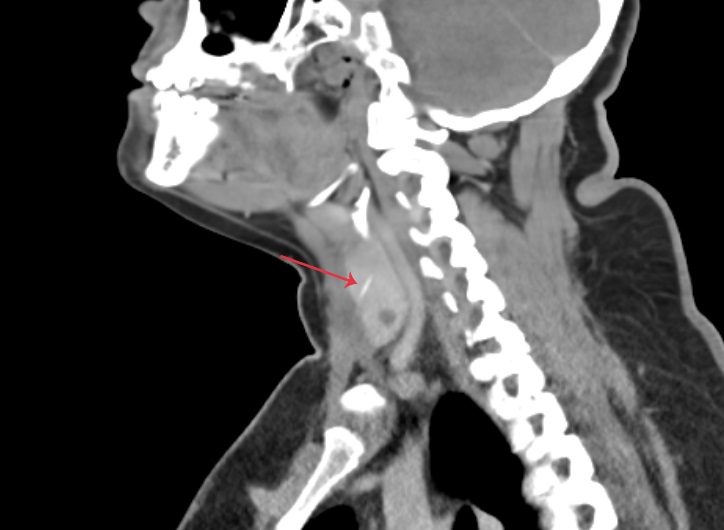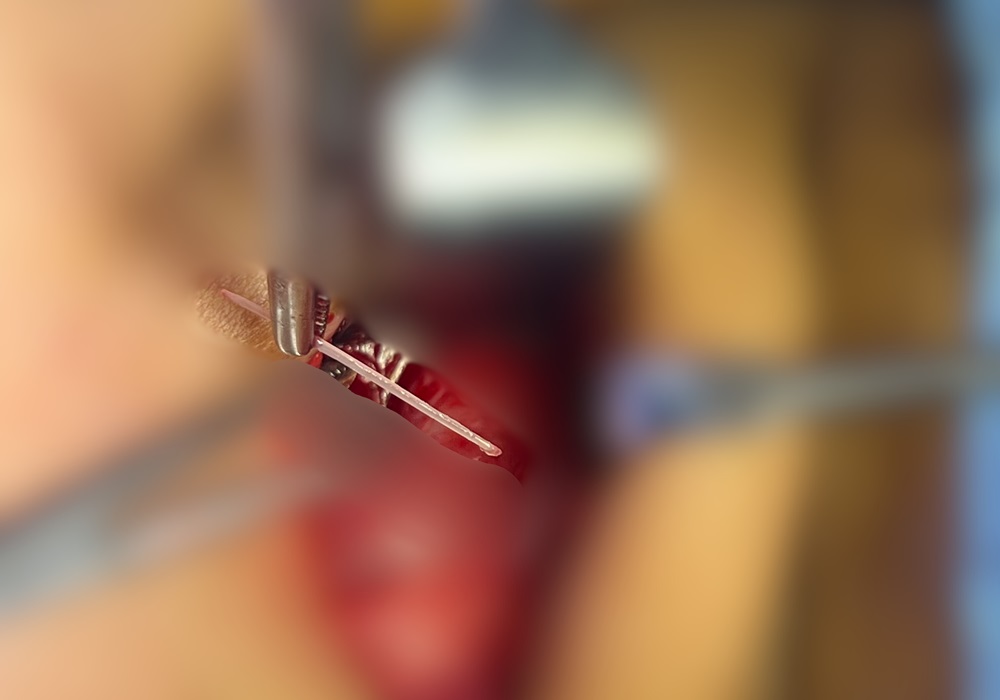9cnews.com
- Fish bones typically lodge in the esophagus or throat, making their migration to the thyroid lobe highly unusual and medically significant.
- Fish bone foreign bodies (FFBs) are the most common food-associated foreign bodies (FBs) in adults, with a higher incidence in Asia compared to meat in Western countries, and esophageal fish bone disease is more common in men than women

Dubai, July 10,2024: Aster Hospital Mankhool, ranked No.5 on Newsweek’s World’s Best Hospitals in UAE list, recently achieved a significant clinical milestone by successfully removing a 3cm fish bone lodged in the thyroid lobe of a 48-year-old Indian woman. Admitted to the Emergency Room on January 15, 2024, the patient presented with complaints of throat irritation, pain while swallowing, and localized neck pain on the lower right side, compounded by a medical history of hypothyroidism.

The incident originated following ingestion of fish, which initially caused discomfort. Although acute symptoms subsided after two days, the onset of progressive and persistent neck pain 10 days later prompted further investigation. Initial examinations using a laryngopharyngoscope revealed no visible foreign body, leading to a subsequent sonogram that identified a suspicious linear object. This necessitated referral to Aster Hospital Mankhool for specialized management.

Under the care of Dr. Deepak Janardhan, E.N.T, Head & Neck Surgery Specialist, and with the support of Dr. Bharath Rao, E.N.T, Endoscopic Nasal & Micro Ear Surgery Specialist, the patient underwent a comprehensive evaluation. A CT scan with contrast confirmed the presence of a 3cm fish bone embedded in the right thyroid lobe, penetrating the strap muscle. Surgical intervention was conducted under general anesthesia, during which the foreign body was successfully extracted, and the wound meticulously closed. The fish bone had been removed successfully two weeks after the onset of symptoms.
Fish bones stuck in the throat or food pipe are serious conditions that warrant urgent intervention. They are a common emergency case, often removed by endoscopic treatment. Fish bones have a risk of damaging the mucosa when lodged in the upper digestive tract. While it is unusual for them to remain in the thyroid, they may cause local infection, abscess formation, large blood vessels rupture, and other serious life-threatening complications when the position of the fish bone migrates to the neck.
Dr. Deepak Janardhan, E.N.T, Head & Neck Surgery Specialist, Aster Hospital Mankhool emphasized the significance of timely intervention in such cases, stating, “Fish bones stuck in the throat can lead to serious complications if not addressed promptly. In this case, the fish bone had migrated to the thyroid gland, posing a significant risk of infection and abscess formation. This case highlights the importance of thorough evaluation and advanced imaging techniques in identifying and managing foreign body ingestions. At Aster Hospital Mankhool, we leverage state-of-the-art diagnostic tools to ensure accurate detection and effective treatment, providing our patients with the highest level of care.”

Dr. Bharath Rao, E.N.T, Endoscopic Nasal & Micro Ear Surgery Specialist, Aster Hospital Mankhool added, “Our approach involved careful planning and precise surgical techniques to ensure complete removal of the fish bone and optimal recovery for the patient. Aster Hospital Mankhool is equipped with cutting-edge technology and a team of highly skilled specialists, enabling us to handle such rare and complicated cases effectively. It’s crucial for individuals to seek medical attention if they experience persistent symptoms following foreign body ingestion.”
Although fish bones getting stuck in the throat is not uncommon, when ignored or left unattended, they can lead to severe complications such as life-threatening infections and cervical abscesses. Usually, they are retrieved with flexible or rigid scopes inserted via the mouth. In rare instances, fish bones can migrate to deeper tissues, causing further complications. In this case, the 3cm fish bone traveled from the esophagus to the thyroid gland, posing a significant threat. The rarity of this case lies in the migration of the fish bone to the thyroid gland, potentially causing a suppurative abscess if left untreated. Timely detection and intervention in this case helped the patient attain faster recovery without complications.
Fish bone-induced thyroid infections, such as Acute Suppurative Thyroiditis (AST), are rare and potentially life-threatening endocrine emergencies. The incidence of AST accounts for 0.1%–0.7% of all thyroid diseases.[2]
Fish bones are not easily detected as foreign bodies. Fish bone foreign bodies (FFBs) are the most common food-associated foreign bodies (FBs) in adults, particularly in Asia, whereas meat is more prevalent in Western countries. The esophageal sphincter is the most common site where these bones become lodged, and esophageal fish bone disease tends to occur more frequently in men than in women.1
Through this case study, Dr. Deepak Janardhan and Dr. Bharath Rao aim to raise awareness about the potential risks associated with fish bone ingestion. They emphasize the critical importance of seeking medical aid, obtaining accurate diagnosis, and receiving prompt treatment to avoid severe complications. This case underscores the necessity for healthcare professionals and the public to be vigilant and proactive when dealing with foreign body ingestion to ensure positive patient outcomes.
9cnews.com





